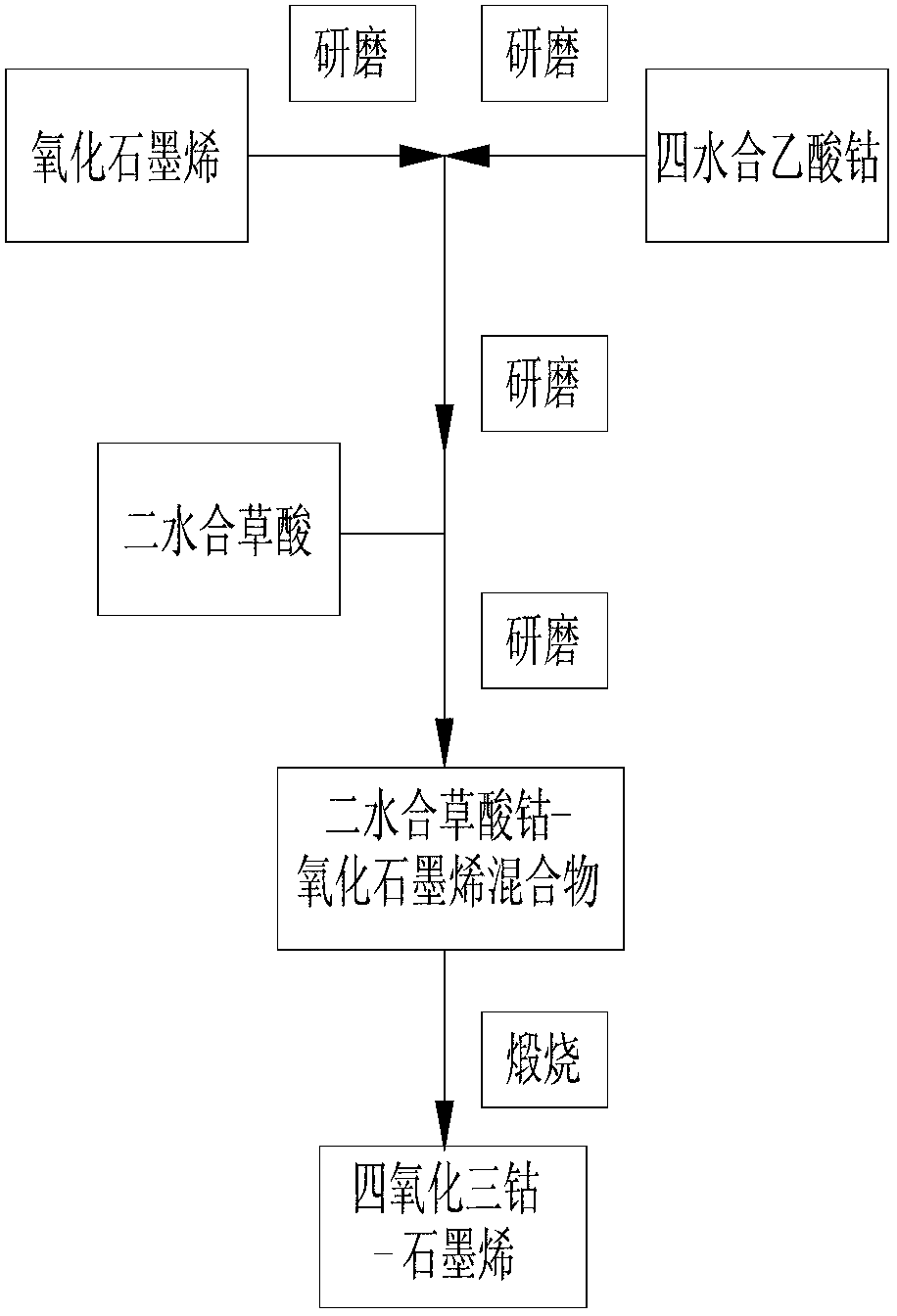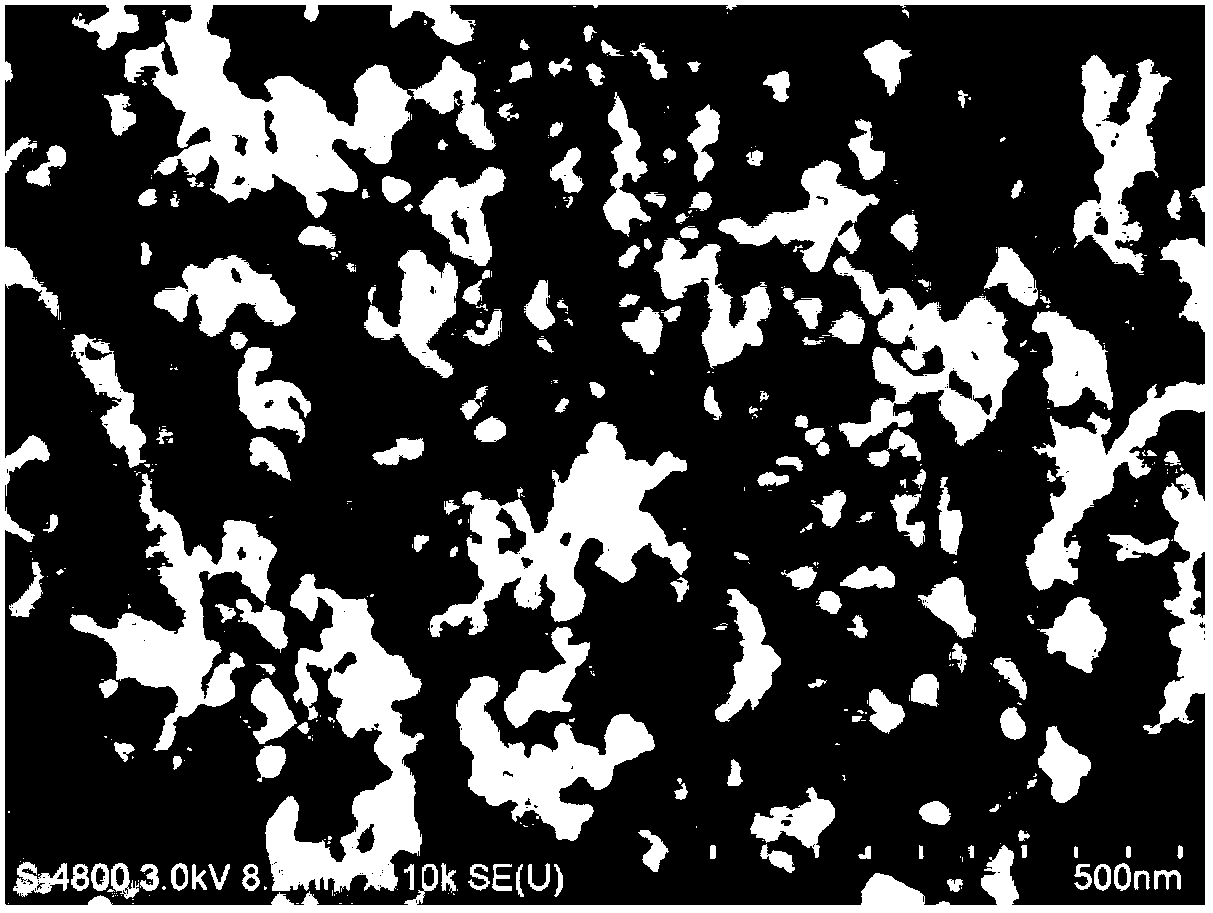Preparation method based on solid-phase reaction for capacitor electrode material
A capacitor electrode, solid-phase reaction technology, used in hybrid capacitor electrodes, hybrid/electric double layer capacitor manufacturing, vanadium halide and other directions, can solve problems such as poor conductivity of cobalt tetroxide, restricting electrochemical performance, and large electrode resistance.
- Summary
- Abstract
- Description
- Claims
- Application Information
AI Technical Summary
Problems solved by technology
Method used
Image
Examples
Embodiment 1
[0044] Such as figure 1 Shown, this capacitor electrode material preparation method based on solid phase reaction comprises the following steps:
[0045] 1. First, weigh the raw materials cobalt acetate tetrahydrate and oxalic acid dihydrate in a molar ratio of 1:1, for example, weigh 0.747g of cobalt acetate tetrahydrate and 0.378g of oxalic acid dihydrate, and grind them in an agate mortar for 0.5h respectively , to ensure that the reactants are fully refined; 2, then, take graphene oxide 0.06g (the amount of graphene oxide is preferably 5% to 30% of the quality of the final cobalt tetroxide obtained, and the present embodiment takes 0.06g to be about the final obtained 25% of the quality of tricobalt tetroxide), mixed evenly with the above-mentioned ground cobalt acetate tetrahydrate, and then ground for about 0.25h; Until the gas with a pungent smell is released, a black paste precursor is obtained, the main component of which is a cobalt oxalate-graphene oxide mixture. ...
Embodiment 2
[0054] Such as figure 1 As shown, the method for preparing the capacitor electrode material in this embodiment differs in step 2:
[0055] The precursor was placed in a tube furnace, raised from room temperature to 300° C. over 0.5 h, and continued to be calcined at this temperature for 0.5 h to obtain a black tricobalt tetroxide-graphene composite material. Comparing the three cobalt tetroxide-graphene composite materials calcined under two kinds of temperature conditions, its properties are as follows: image 3 As shown, the integral area of the cyclic voltammetry curve of the sample at the calcination temperature of 275°C is greater than that at the calcination temperature of 300°C, indicating that the specific capacitance of the sample at the calcination temperature of 275°C is greater than that at the calcination temperature of 300°C.
Embodiment 3
[0057] The capacitor electrode material preparation method of the present embodiment, see Figure 4 , including the following steps:
[0058] 1. First weigh the raw materials cobalt acetate tetrahydrate and citric acid monohydrate in a molar ratio of 1:1, for example, weigh 0.747g of cobalt acetate tetrahydrate and 0.627g of citric acid monohydrate, and grind them in an agate mortar 1h to ensure that the reactant is fully refined; 2. Then, take 0.072g of graphene oxide (according to 30% of the mass of cobalt tetroxide finally obtained), mix it with the above-mentioned ground cobalt acetate tetrahydrate, and then grind for about 0.5h; 3. Finally, continue grinding with the above-mentioned ground citric acid monohydrate for 0.5h at room temperature until the gas without pungent odor in the mixture is released, and a black paste precursor is obtained. The main component is cobalt citrate-graphite oxide Alkene mixture.
[0059] A chemical reaction occurs in the above grinding, s...
PUM
 Login to View More
Login to View More Abstract
Description
Claims
Application Information
 Login to View More
Login to View More - R&D
- Intellectual Property
- Life Sciences
- Materials
- Tech Scout
- Unparalleled Data Quality
- Higher Quality Content
- 60% Fewer Hallucinations
Browse by: Latest US Patents, China's latest patents, Technical Efficacy Thesaurus, Application Domain, Technology Topic, Popular Technical Reports.
© 2025 PatSnap. All rights reserved.Legal|Privacy policy|Modern Slavery Act Transparency Statement|Sitemap|About US| Contact US: help@patsnap.com



